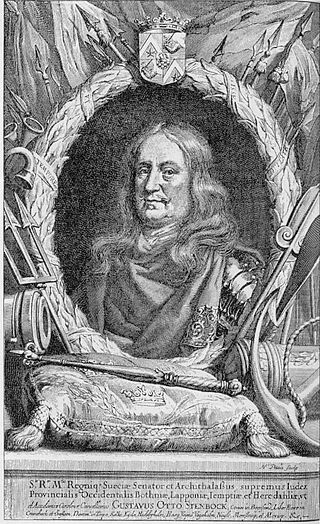
Gustaf Otto Gustafsson Stenbock was a Swedish military officer and politician.

Ingrid Ylva was a Swedish noblewoman, the wife of Magnus Minnesköld of Bjälbo and the mother of regent Birger Jarl. The exact years of her birth and death are unclear; a traditional year quoted for her death is 26 October 1252; it is also considered, though, that this was the date of her burial, and that she had actually died in 1251.
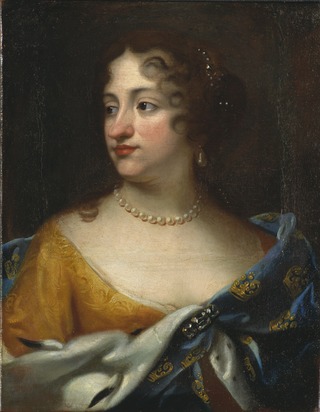
Ulrika Eleonora of Denmark was Queen of Sweden as the wife of King Charles XI. She is often admired for her generosity and charity.

TorkelKnutsson was Lord High Constable of Sweden, member of the Privy Council of Sweden (Riksråd), and virtual ruler of Sweden during the early reign of King Birger Magnusson (1280–1321).
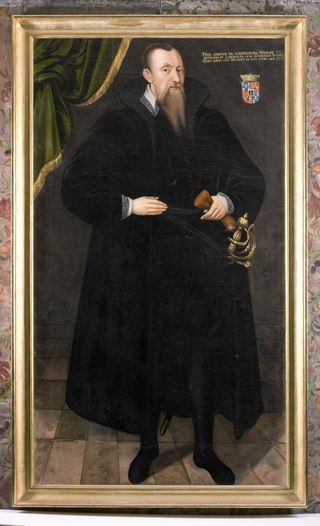
Per Brahe the Elder (1520–1590) was a Swedish statesman.

The House of Bjälbo, also known as the House of Folkung, was a Swedish family that produced several medieval bishops, jarls and kings of Sweden. It also provided three kings of Norway and one king of Denmark in the 14th century.

Count Magnus Brahe (1564–1633) was a Swedish noble. Being both Lord High Constable and Lord High Steward of Sweden, he was a notable figure in 17th century Sweden.
Christina of Denmark, was Queen of Sweden as the wife of King Erik the Saint, and the mother of King Knut Eriksson.
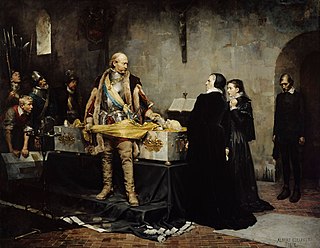
Baron Klaus Eriksson Fleming was a Finnish-born member of the Swedish nobility and admiral, who played an important role in Finnish and Swedish history during the rise of Sweden as a Great Power. He was a trustee of kings John III and Sigismund Vasa. His wife was Ebba Stenbock.
The Lord High Constable was a prominent and influential office in Sweden, from the 13th century until 1676, excluding periods when the office was out of use. The office holder was a member of the Swedish Privy Council and, from 1630 and on, the head of the Swedish Council of War. From 1634, the Lord High Constable was one of five Great Officers of the Realm.
The Great Officers of the Realm were the five leading members of the Swedish Privy Council from the later parts of the 16th century to around 1680. With the constitution of 1634, the five officers became heads of five different branches of government. The same constitution also declared that the great officers were to act as regents during the minorities of kings or regnal queens. All great officers of the realm were abolished by king Charles XI of Sweden. The Lord High Steward and the Lord High Chancellor offices were revived in the late 18th century, but were soon removed again.

The Lord of the Realm was a title of honour introduced by Gustavus III, King of Sweden shortly after his coup and the newly passed constitution. The title was granted by the King and was first received by Frederick William, Prince von Hessenstein on 15 January 1773 by letter. One of the most famous title holders was Hans Axel, Count von Fersen, the supposed lover and confidant of Marie Antoinette, Queen of France.
The Lord High Admiral or Admiral of the Realm was a prominent and influential office in Sweden, from c. 1571 until 1676, excluding periods when the office was out of use. The office holder was a member of the Swedish Privy Council and the head of the navy and Admiralty of Sweden. From 1634, the Lord High Admiral was one of five Great Officers of the Realm.
The Lord High Treasurer was a highly prominent member of the Swedish Privy Council between 1602 and 1684, excluding periods when the office was out of use. The Lord High Treasurer was head of the Kammarkollegiet and, from 1634, one of five Great Officers of the Realm.

Count Magnus Gabriel De la Gardie was a Swedish statesman and military man. He became a member of the Swedish Privy Council in 1647 and came to be the holder of three of the five offices counted as the Great Officers of the Realm, namely Lord High Treasurer, Lord High Chancellor and Lord High Steward. He also served as Governor-General in the Swedish dominion of Livonia.
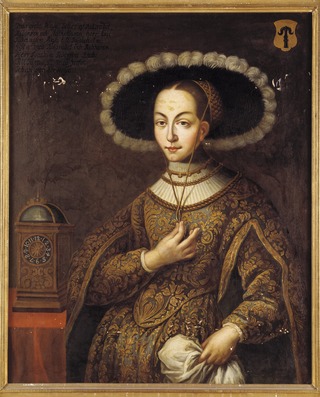
The Westrogothian rebellion, also known as Västgötabullret or Västgötaherrarnas uppror was a Swedish rebellion which took place in the provinces of Småland and Västergötland in Sweden during the spring of 1529. The rebellion was led by members of the Swedish nobility, and the purpose was to depose the Swedish King Gustav Vasa in an attempt to end the recently initiated Swedish Reformation.
Henrietta Polyxena of Vasaborg (1696–1777) was a Swedish countess. She was the last member of the House of Vasaborg
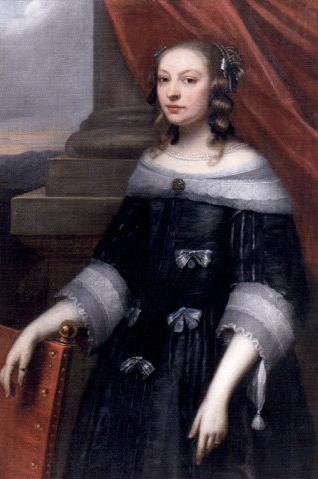
Events from the year 1652 in Sweden
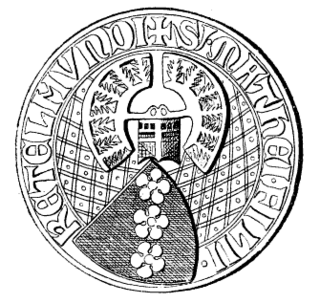
Mats Kettilmundsson was a Swedish knight, riksdrots and statesman.

The Wachtmeister family is a Swedish noble family from Livonia, who immigrated to Sweden in the 16th century. The name Wachtmeister is German for 'sergeant'.















